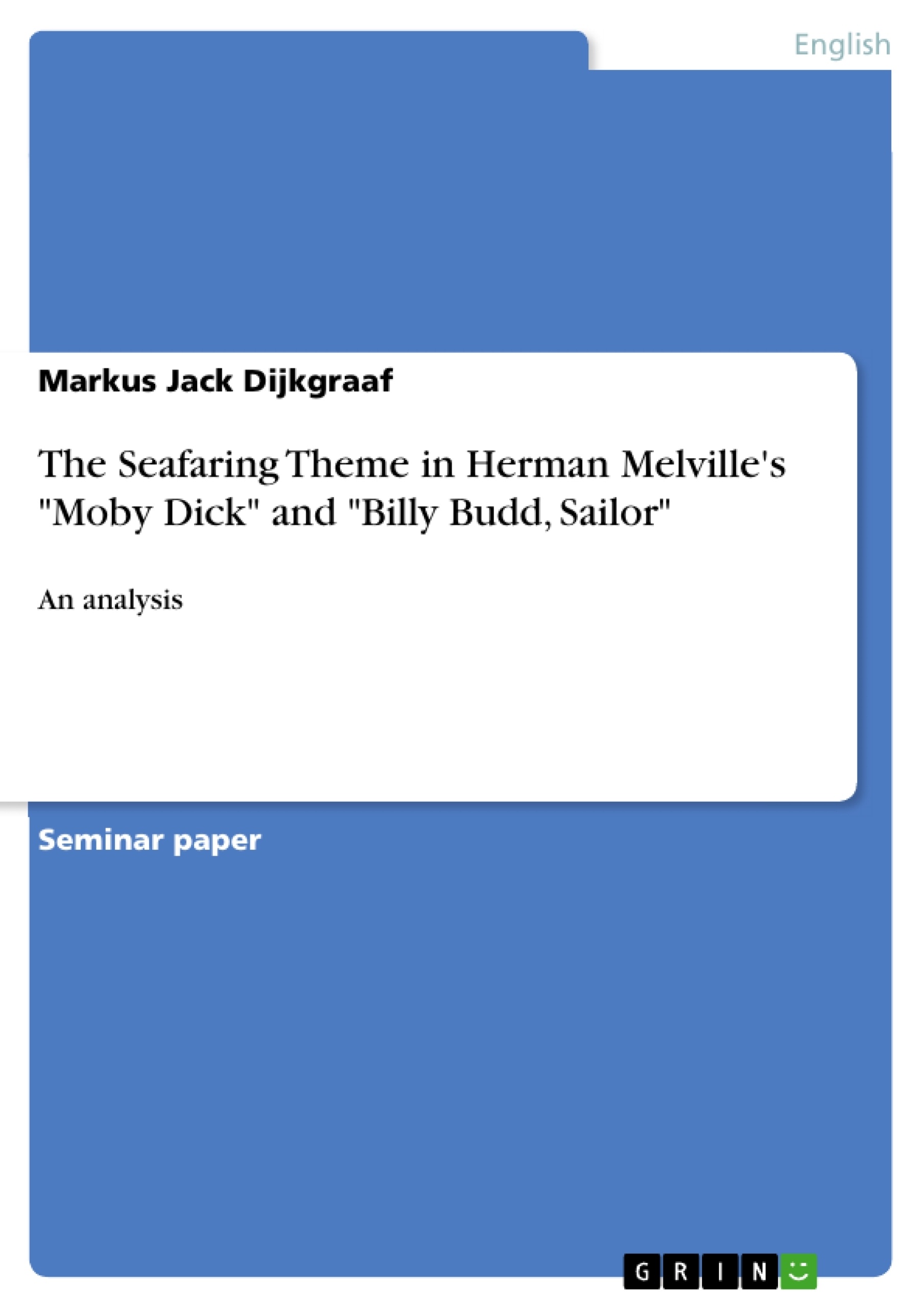Herman Melville's work is characterized by a dominant overarching theme in most cases. One of the strongest motives is that of seamanship. Be it in "Moby Dick", "Billy
Budd, Sailor" or "Benito Cerino". But how great is the impact of those themes on the overall plot or story and, in conjunction, would they play out the same in a land-based setting?
To explore the psychological effects of isolation and confinement on the characters, this essay will mostly rely on studies by Jack Stuster. His work mainly deals with
extreme isolation in arctic or space missions, but the same circumstances apply to life aboard a seagoing vessel, though to a lesser degree. In addition, the author draws on three
years of personal experience working in a maritime setting, one year of which was spent on a civilian ship and two years of military service aboard navy vessels.
The first chapter will define the distinctive features of Melville's chosen setting and seperate it from a dry land theme. In the second chapter, the essay will apply those features to
the novel "Moby Dick" and the short story "Billy Budd, Sailor" in order to analyze their impact on the plot development.
Inhaltsverzeichnis (Table of Contents)
- Introduction
- I. Peculiarities of naval settings
- 1. Leadership and personnel selection criteria
- 2. Group interaction
- 3. Outside communications
- II. The impact of setting on Melville's plot development
- 1. Leadership and personnel selection
- 2. Group interaction
- 3. Outside communications
- III. Conclusion
Zielsetzung und Themenschwerpunkte (Objectives and Key Themes)
This analysis delves into the unique characteristics of naval settings and their impact on the plots of Herman Melville's Moby Dick and Billy Budd, Sailor. It aims to explore how the isolation and confinement of a seafaring environment influence the characters' actions and behaviors, drawing on research by Jack Stuster on extreme isolation and personal maritime experience.
- The distinctive features of naval settings compared to land-based environments.
- The influence of leadership styles and personnel selection criteria on the characters' actions.
- The impact of group interaction and dynamics on the plot development.
- The role of outside communications and its effects on morale and mental well-being.
- The application of these themes in analyzing the plots of Moby Dick and Billy Budd, Sailor.
Zusammenfassung der Kapitel (Chapter Summaries)
The first chapter introduces the unique features of naval settings, highlighting the specific conditions and behavioral patterns that differentiate them from land-based environments. Drawing on Stuster's research on isolation and confinement, it focuses on the critical factors of leadership, personnel selection, group interaction, and outside communications, which shape the characters' experiences and decisions.
The second chapter applies these factors to analyze the plots of Moby Dick and Billy Budd, Sailor. It explores how the naval setting influences the central conflicts, character interactions, and overall plot development in each story.
Schlüsselwörter (Keywords)
The central keywords of this analysis include naval settings, isolation, confinement, leadership, personnel selection, group interaction, outside communications, Moby Dick, Billy Budd, Sailor, Herman Melville, Jack Stuster, and extreme isolation.
- Quote paper
- Markus Jack Dijkgraaf (Author), 2012, The Seafaring Theme in Herman Melville's "Moby Dick" and "Billy Budd, Sailor", Munich, GRIN Verlag, https://www.grin.com/document/307390



